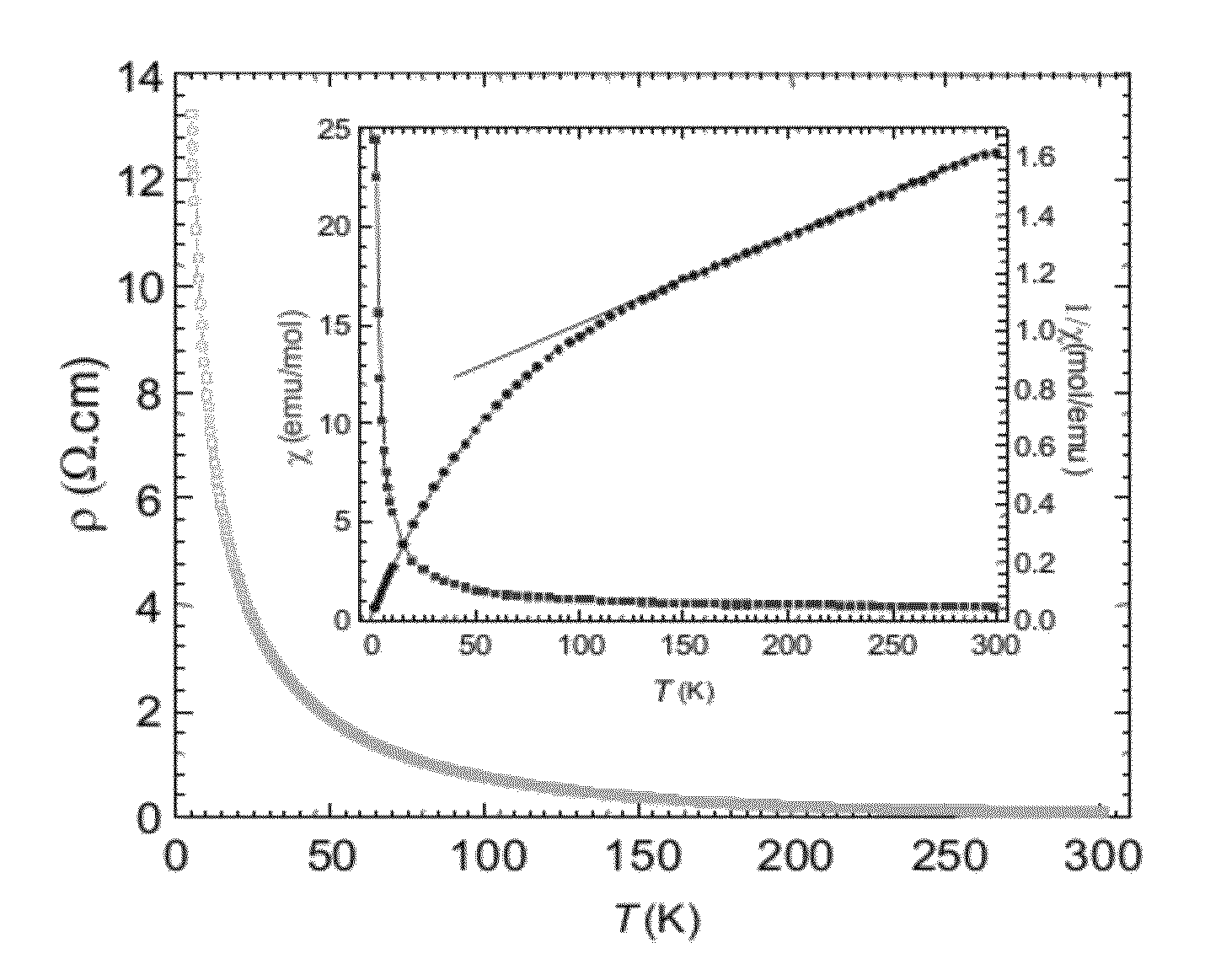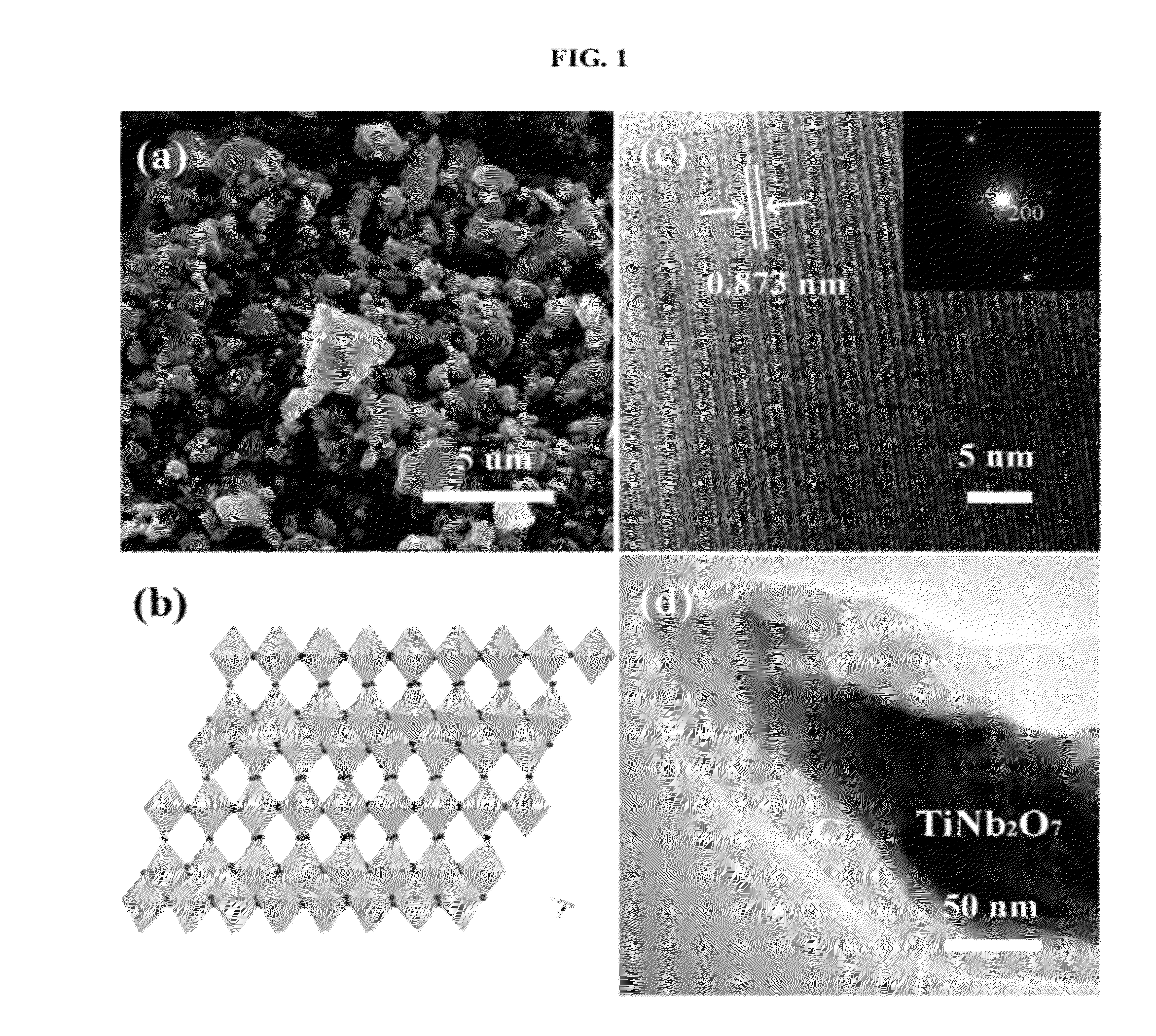Niobium Oxide Compositions and Methods for Using Same
a technology of niobium oxide and composition, which is applied in the direction of non-aqueous electrolyte cells, cell components, non-metal conductors, etc., can solve the problems of short-circuit battery, electrolyte on fire, and low capacity
- Summary
- Abstract
- Description
- Claims
- Application Information
AI Technical Summary
Problems solved by technology
Method used
Image
Examples
example 1
Synthesis of TNO
[0068]TNO was prepared by a sol-gel technique. Nb2O5 (Alfa, 99.9%), hydrofluoric acid (40 / 70 HF / H2O), Ti(OC3H7)4, ammonia, and citric-acid monohydrate were used as starting materials. First, Nb2O5 was dissolved in hydrofluoric acid to form a transparent solution. In order to remove the F− ions from the solution, ammonia was added to obtain a white Nb(OH)5 precipitate. After the precipitate was washed and dried, the Nb(OH)5 was dissolved in citric acid to form a Nb(V)-citrate solution. A water-ethanol solution containing Ti(OC3H7)4 was added to this solution while the pH value of the solution was adjusted by using ammonia. This final mixture containing Nb(V) and Ti(IV) ions was stirred to form a citric gel at 90° C. This gel was heated to 140° C. to obtain a precursor. The precursor was then annealed at 900° C. and at 1350° C. to obtain the TNO product.
example 2
Synthesis of DTNO
[0069]DTNO was prepared by conventional solid state reaction. Stoichiometric quantities of the starting materials, Nb2O5 (Alfa, 99.9%), Nb (Alfa, 99.9%), and TiO2 (Alfa, 99.9%), were thoroughly ground and pressed into pellets. The pellets were wrapped in Ta foil, sealed in a vacuum quartz tube, and annealed at 1100° C. for 24 h.
example 3
Synthesis of C-TNO and C-DTNO
[0070]C-TNO and C-DTNO were prepared by ball-milling the as-prepared samples of Examples 1 and 2 into very fine powder and before a sucrose solution was added as the precursor for carbon coating. The mixtures thus obtained, with different concentrations of sucrose (ranging from 2 to 5 wt %), were dried at 80° C. before the precursors were annealed at 550° C. for 6 h in a flowing argon atmosphere.
PUM
| Property | Measurement | Unit |
|---|---|---|
| Fermi energy | aaaaa | aaaaa |
| Fermi energy | aaaaa | aaaaa |
| composition | aaaaa | aaaaa |
Abstract
Description
Claims
Application Information
 Login to View More
Login to View More - R&D
- Intellectual Property
- Life Sciences
- Materials
- Tech Scout
- Unparalleled Data Quality
- Higher Quality Content
- 60% Fewer Hallucinations
Browse by: Latest US Patents, China's latest patents, Technical Efficacy Thesaurus, Application Domain, Technology Topic, Popular Technical Reports.
© 2025 PatSnap. All rights reserved.Legal|Privacy policy|Modern Slavery Act Transparency Statement|Sitemap|About US| Contact US: help@patsnap.com



